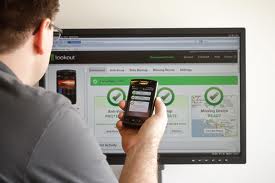 “If someone has 1,000 followers, for example, and complains about a company then that company needs to be seen to be dealing with the issue.”
“If someone has 1,000 followers, for example, and complains about a company then that company needs to be seen to be dealing with the issue.”
Michael Taggart, head of digital at communications agency MRM
In Twitter bad news can spread very quickly. Re-tweets and complaint “hashtags” (e.g. #vodafail, #BTfail) have increased the importance of proactive and real-time Twitter monitoring and customer service.
Many companies are finally realizing, that to manage their online reputation they need to get involved and do something. Besides Twitter active BT, Alsa, Bank of Scotland and other companies, now the car brand Peugeot has launched officially a customer care centre in Twitter.
By setting up a customer Twitter service you may be able to solve problems before they become crises and close the deal before competitors even know there was one. But how to make sure it will not just make things worse?
#1 Build a template/chart to help your CRM classify which tweets qualify as high, medium or low alert
There are so many tweets it is important to prioritize. Define tweet’s importance by building a chart that helps your customer Twitter service to classify the urgency of each tweet and see which requires immediate action. Read more details on which tweets/posts to respond, ignore or escalate here.
#2 Decide what kind of customer Twitter service you want to establish
It is important to decide from the beginning whether to establish an official customer Twitter service or simply surprise customers by tweeting. As mentioned before, there are few companies who have opted in for an official Twitter customer service. However, before establishing one, be realistic on your time, resources and budget. The customer who gets a sudden answer and solution to his tweet is delighted, but a customer who does not receive an answer to his tweet for the official customer Twitter service gets more upset.
#3 Establish a clear process
Brief and supply the person/team who handles the customer Twitter service with a clear process. Make sure they know how to classify and prioritize the tweets and who to escalate important issues. All the team should know each others roles in the process e.g. who searches, who classifies, who responds…
#4 Use tools to track the tweets
There is a lot of tweets out there – in 2011 Twitter reached billion tweets per week. Without proper tools, the quantity of information can be too much to handle.
The first tool to use is of course Twitter search to have an overview what people are saying about you, to refine your search and add filters go to advanced search. To monitor in real time what is being said about your industry, your brand or competitors, for example TweetDeck is a good tool.
#5 Act and respond fast
Tweets need to be responded to quickly, approximately within 10 minutes because of the speed they come, go and spread across the social networks.
#6 Assign the right person to answer
Make sure the person who answers is the right person to be handling the post/situation. To be sure, create a list for the people handling the tweets to help them to re-assign the post to an appropriate person e.g. leads to sales, dealer issues for person in charge of dealers, etc.
#7 Do not use a non-personalized automated response and do not Spam
Nothing annoys more an angry customer than an automatic cold non-personalized message in the time of need or anger. Occasionally people get even upset of you tweeting them, but remember not to take it personally. Best way to proceed is to tweet once offering your help or solution, but if you do not get a response and the conversation does not start – Stop. Do not insist, it will just backfire and you will be accused publicly of spamming.
#8 Do not forget the reporting and follow up
Ask the person/team to keep log on the happenings, classifying them by incidents, queries, opportunities and problems. Include the date, person’s “name”, tweet, response and status. This is how you can see end of the month how many tweets have you responded, now many tweets were escalated, how many satisfied customers you had and how many issues were resolved. Then follow up, follow up, follow up. See if these customers tweeted something positive about you, have a look around the web if the escalated issues are also in blog posts and customer forums and think constantly ways to improve the service and process.
#9 Use Twitter Favorites as real-time testimonials
After a while, it might be a good idea to use Twitter favourites to gather positive tweets from your fans and customers. It has its own RSS feed, which is a nice resource of short, 140 character, real-life testimonials for new potential leads – and top management of course to justify the investment. It is short, effective and works.
#10 Ask tweeters how you could improve your customer service
People in Twitter are more reactive and more likely to answer than in other medias. People also like to give their opinion and advice freely. Some of the feedback is quite obvious, but sometimes there are very good ideas as well. Why to guess, when customers know the best what they want?
Customer Twitter service can be a success or a flop. Remember that monitoring and responding tweets is a time consuming task and requires resources. Before going ahead, make sure you are able to answer and follow up the negative feedback, queries and opportunities. If there are unanswered queries or comments or if they are handled sloppily, the end result might be worse than the situation was in the beginning.
Also, do not stop investing in your call centre. BT has a long spread reputation of having a rubbish call centre and there is a big online (and offline) buzz going on saying that if you want to get you problem resolved without hanging on the phoneline for hours, you need to tweet negatively of the company and in 5 min you get a response. There is similar feedback on Alsa, Royal Mail and Bank of Scotland. Maybe it is me, but customers should not be encouraged to complain publicly to get their issues resolved…
Other thing us marketers forget sometimes is that most of the people are not in Twitter and especially older people do not how exactly to use it (or even see a reason to use it). Therefore it is important to concentrate on both call centre and Twitter service. If the call centre is good, quick and effective, there will be less negative tweets spreading across web to thousands of people and if the customer Twitter service is good the crises are resolved before they even started.






